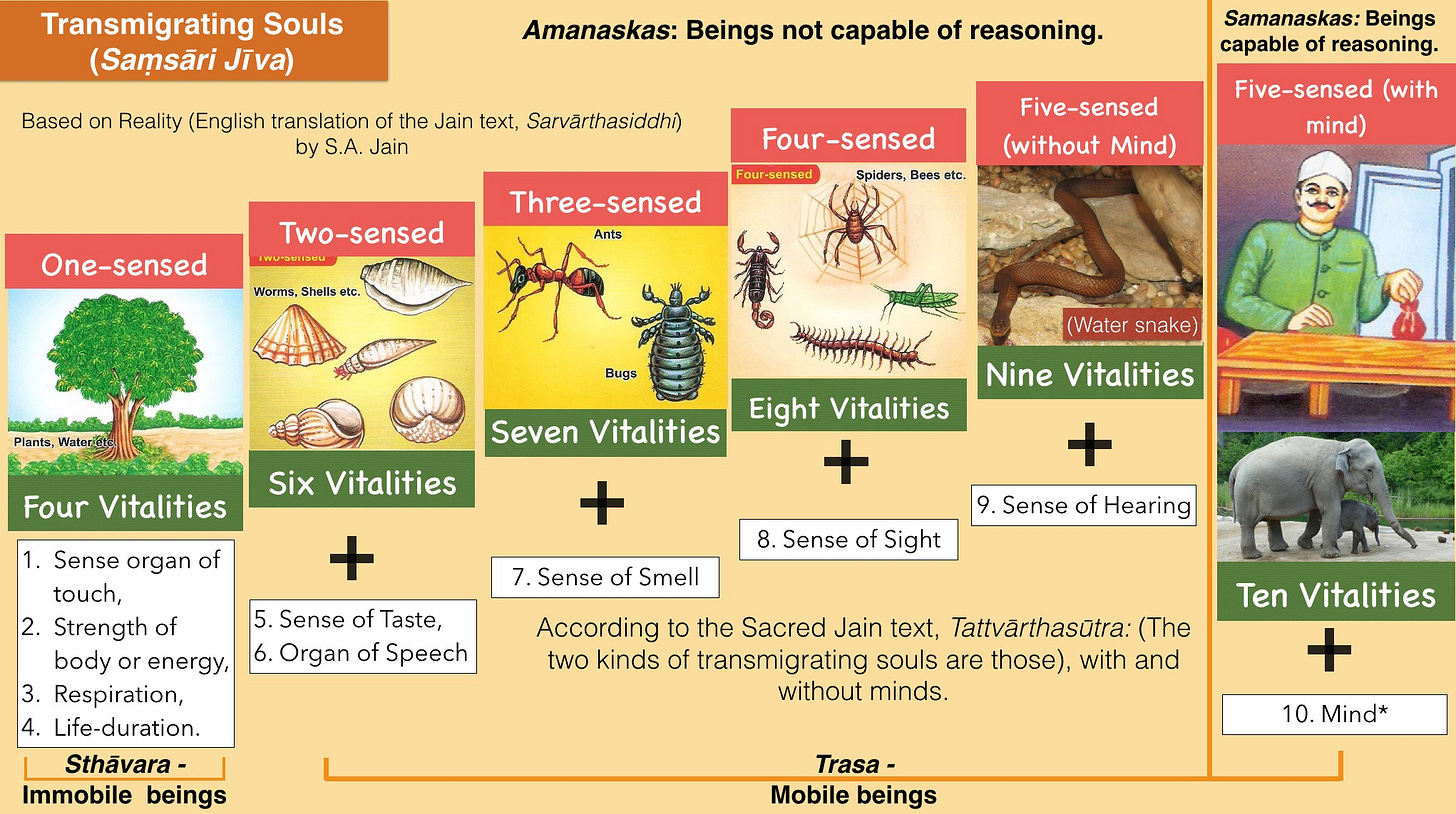We are now at the end of our segment on “ahimsa” translated as non-harm, or not to strike. Ahimsa is one of the 5 Yamas or restraints of a yoga student. The Yamas are primarily focused on how we interact with others, including the things that we eat.
It is common in both Buddhist and yogic frameworks to refrain from eating animal meat such as pork or beef; some also refrain from byproducts such as cheese or milk.
In Hinduism, cows are viewed as holy animals, representing the Mother Goddess, offering nourishing milk. In India, cows wander the streets freely and cars move around them in traffic.
In Jainism, which is also based in India, ahimsa or non-harm extends to anything alive including plants. Ten classifications are made to count the number of senses and vitalities that a being has: the five senses of sight, sound, taste, touch and smell; and the five vitalities of having energy, respiration, life-duration, organ of speech and mind.
Root plants such as potatoes or garlic are not eaten because it would kill the entire plant to eat, and would injure insects living near the soil. Leafy plants are eaten, because they can be harvested without injuring the plant. Mosquitoes and ants are not killed, but swept aside. See the attachment for classifications of beings.
In Buddhism, as in Jainism, eating meat is viewed practically. If the goal of yoga or spiritual practice is to attain moksha or enlightenment by cleansing our body of samskars, the knots of craving and aversion that live between our minds and bodies, then according to this understanding, by eating an animal – in addition to causing harm, we are taking their cravings and aversions into our bodies.
In more modern movements, we now have vegan and vegetarian movements centered around not wanting to inflict unnecessary harm or cruelty to animals, especially from modern industrial farming, where animals live in great suffering.
There are three stories about eating meat in the context of spiritual practice that I would like to share here:
The Buddha. After Gotama Buddha attained enlightenment around 2,500 years ago, he traveled with a group of disciples, living in the tradition of monks, by asking for alms. Each morning the traveling monks would take their empty bowls, going door to door, asking for food. Some villages only had meat to offer, and in the case of having only meat to eat, the monks were allowed to eat meat rather than to starve. When the Buddha died, he had become ill from eating pork soup that had gone bad. According to some versions of the tale, he knew the soup was bad but decided to eat it because it was what was offered and it was his time.
The Ungrounded Student. In some meditation communities where practice is very austere with prolonged periods of meditation and a vegetarian diet with fasting, some students can become ungrounded. A vegetarian diet can tend to make one feel lighter in their bodies, while meditation can stir up a lot of mental and spiritual activity. Sometimes, the mind becomes like a balloon tethered by a thin string on a windy day, unable to remain stable, getting wrapped around. At this point, the equanimity is lost, and the student may become manic. At this point, it is recommended that the student take red meat, to develop heaviness and grounding in the body, before continuing with spiritual practices again.
The Skeptical Student. One of my meditation teachers, S.N. Goenka, always recommends that you do what makes sense. If the vegetarian diet doesn’t make sense for you, don’t do it until it does. While you are in yogic or monastic environments, of course following the dietary restrictions. Perhaps you might try a vegan or vegetarian diet out of curiosity. But, if it really doesn’t make sense to you, then don’t do it until it does. In its own time, the understanding and desire not to harm will come naturally as part of a spiritual practice.
With all these different frameworks, what diet makes sense for you? If you do want to refrain from eating meat or animal products, how will you still nourish your body with the necessary vitamins and proteins? How can you engage in ahimsa or non-harm in your eating, while also practicing non-harm towards yourself?
Today, our meditation is going to focus on a contemplation of the experience of other life forms, closing with loving-kindness or metta for all beings.












